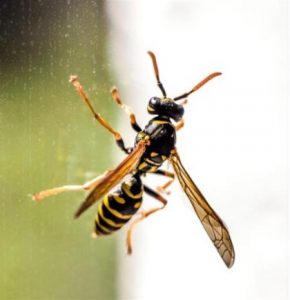 Working outdoors or indoors, you can be at risk from being stung by flying insects like bees, wasps, and hornets. According to the National Institute of Occupational Safety and Health (NIOSH), stings from some of these flying insects may result in severe allergic reactions that require immediate medical care, and it may even cause death.
Working outdoors or indoors, you can be at risk from being stung by flying insects like bees, wasps, and hornets. According to the National Institute of Occupational Safety and Health (NIOSH), stings from some of these flying insects may result in severe allergic reactions that require immediate medical care, and it may even cause death.
First Aid
If you or another worker believes you have been stung, NIOSH suggests you take the following steps:
- Remain with the injured person in case they may need further help from a potential reaction to the sting.
- Remove the embedded stinger quickly using gauze, or flat surfaced object like a credit card, by gently scraping the affected site. Don’t use tweezers or squeeze the wound site.
- Apply a cold pack to the affected area to reduce swelling and pain. Wrap in a clean towel or cloth and take the cold pack off the site for 10 minutes and then repeat this on/off until pain subsides.
- Do not scratch affected site; this may increase swelling, itching, and the risk of infection.
- If swelling or other symptoms develop elsewhere on the body, such as the face, call 911. This is a warning that it could be the beginning of an allergic reaction.
Remember Some Individuals Are Allergic:
Individuals who know they are allergic to stinging insects should talk with their doctor about how to respond to stings. Family members and friends should also have this information.
If you’re stung and you are allergic to stings, or a sting victim close to you is, use an epinephrine auto- injector, such as an EpiPen, to reverse the symptoms. Then call 911 or your local emergency services number.
If there’s no EpiPen available, call 911 immediately.
BEE SAFETY SMART…IT’S THE WAY TO BE!
Download Flyer: STOTW_1039_Flying Stinging Insects Download Spanish Flyer: STOTW_1039_Flying Stinging Insects_esp

